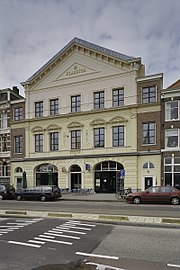
Despite Dutch neutrality, Nazi Germany invaded the Netherlands on 10 May 1940 as part of Fall Gelb. On 15 May 1940, one day after the bombing of Rotterdam, the Dutch forces surrendered. The Dutch government and the royal family relocated to London. Princess Juliana and her children sought refuge in Ottawa, Canada until after the war.
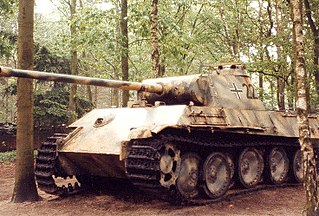
The Overloon War Museum is located in Overloon, Netherlands.

The Dutch resistance to the German occupation of the Netherlands during World War II can be mainly characterized as non-violent. The primary organizers were the Communist Party, churches, and independent groups. Over 300,000 people were hidden from German authorities in the autumn of 1944 by 60,000 to 200,000 illegal landlords and caretakers. These activities were tolerated knowingly by some one million people, including a few individuals among German occupiers and military.

Jewish resistance under Nazi rule took various forms of organized underground activities conducted against German occupation regimes in Europe by Jews during World War II. According to historian Yehuda Bauer, Jewish resistance was defined as actions that were taken against all laws and actions acted by Germans. The term is particularly connected with the Holocaust and includes a multitude of different social responses by those oppressed, as well as both passive and armed resistance conducted by Jews themselves.

Karl Gröger was a member of a Dutch resistance group executed in 1943.

The Joods Museum, part of the Jewish Cultural Quarter, is a museum in Amsterdam dedicated to Jewish history, culture and religion, in the Netherlands and worldwide. It is the only museum in the Netherlands dedicated to Jewish history.

The History of the Jews in Amsterdam focuses on the historical center of the Dutch Jewish community, comprising both Portuguese Jews originally from both Spain and Portugal and Ashkenazi Jews, originally from central Europe. The two separate groups have had a continuing presence since the seventeenth century. Amsterdam has been called a Jerusalem of the West and the "Dutch Jerusalem". The Holocaust in the Netherlands devastated the Jewish community, with the Nazis murdering some 75% of the approximately 80,000 Jews at time present in Amsterdam, but the community has managed to rebuild a vibrant and living Jewish life for its approximately 15,000 present members.

In the early modern era, European Jews were confined to ghettos and placed under strict regulations as well as restrictions in many European cities. The character of ghettos fluctuated over the centuries. In some cases, they comprised a Jewish quarter, the area of a city traditionally inhabited by Jews. In many instances, ghettos were places of terrible poverty and during periods of population growth, ghettos had narrow streets and small, crowded houses. Residents had their own justice system. Around the ghetto stood walls that, during pogroms, were closed from inside to protect the community, but from the outside during Christmas, Pesach, and Easter Week to prevent the Jews from leaving at those times.
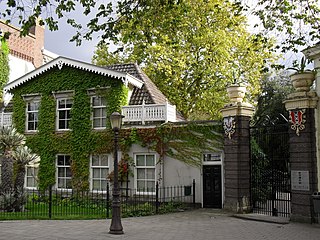
Plantage is a neighbourhood of Amsterdam, Netherlands located in its Centrum borough. It is bordered by the Entrepotdok to the north, Plantage Muidergracht to the east and south and Nieuwe Herengracht to the west. In the centre of the neighbourhood lies the Natura Artis Magistra zoo. It had a population of 1,980 in 2017.

Walraven "Wally" van Hall was a Dutch banker and resistance leader during the occupation of the Netherlands in World War II. He founded the bank of the Resistance, which was used to distribute funds to victims of the Nazi occupation of the Netherlands and fund the Dutch resistance. Van Hall was executed by the German occupier in Haarlem shortly before the end of the war and buried at the Erebegraafplaats Bloemendaal.
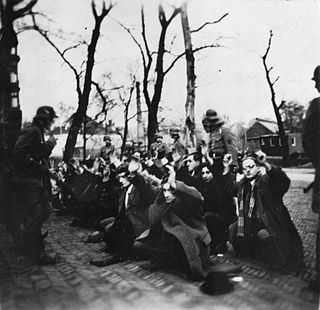
The February strike of 1941 was a general strike in the Nazi-occupied Netherlands during World War II. It was organized by the outlawed Communist Party of the Netherlands in defence of persecuted Dutch Jews and against the anti-Jewish measures and the activities of Nazism in general.

The Weerbaarheidsafdeling was the paramilitary arm of the National Socialist Movement in the Netherlands (NSB), the fascist political party that collaborated with the German occupiers of the Netherlands during World War II. The organization, roughly equivalent to the German SA, was founded in 1932 by Anton Mussert, co-founder of the NSB in 1931 and its leader until the end of the war. Members wore and marched in black uniforms and were thus called "blackshirts". In 1933 the Dutch government banned the wearing of uniforms, and the WA was disbanded in 1935 in order to forestall the Dutch government's banning it. In 1940, after the German invasion, the WA became openly active again, and more ruthless than before. They specialized in violent attacks, particularly on the Dutch Jewish population.

Lippmann, Rosenthal & Co. or LiroBank originally a Dutch Jewish bank, was seized and used by Nazis for looting Jewish property during the German occupation of the Netherlands during World War II.

The Holocaust in the Netherlands was organized by Nazi Germany in occupied Netherlands as part of the Holocaust across Europe during the Second World War. The Nazi occupation in 1940 immediately began disrupting the norms of Dutch society, separating Dutch Jews in multiple ways from the general Dutch population. The Nazis used existing Dutch civil administration as well as the Dutch Jewish Council "as an invaluable means to their end".
Hendrika Jacoba "Kiky" Gerritsen-Heinsius was recognized by Yad Vashem as Righteous Among the Nations on 15 September 1989, and was also awarded the Verzetsherdenkingskruis by the Dutch government.
Catharina Aaltjen Boekbinder was a member of the Dutch Resistance during World War II. Known to family and friends as "Ina Boekbinder," she used the alias, "Catharina Weesing," during her resistance work. In 1981, she was awarded the Verzetsherdenkingskruis by the Dutch government for her work as a freedom fighter and for her efforts to protect Jewish men, women and children in the Netherlands from persecution and deportation by Nazi officials.

The 1943 bombing of the Amsterdam civil registry office was an attempt by members of the Dutch resistance to destroy the Amsterdam civil registry (bevolkingsregister), in order to prevent the German occupiers from identifying Jews and others marked for persecution, arrest or forced labour. The March 1943 assault was only partially successful, and led to the execution of 12 participants. Nevertheless, the action likely saved many Jews from arrest and deportation to Nazi extermination camps.
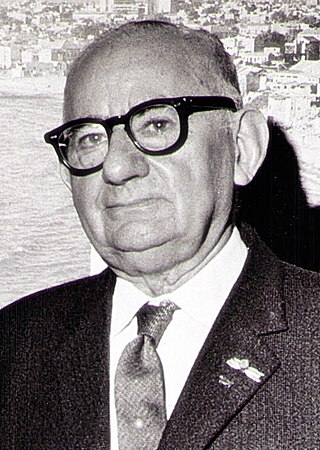
Maurice Frankenhuis was a Jewish Dutch businessman, historian, researcher, author, collector, numismatist, Holocaust survivor, and philanthropist. He documented the history of World War I and World War II through his family's experiences in the Netherlands and subsequent internment in two concentration camps. Throughout the ordeal he built a collection of memorabilia and authored a firsthand account to the Holocaust of Dutch Jewry. He dedicated himself to educating about the Holocaust, and preserve a record of history for future generations including donations of his collections of medals and posters to various museums around the world, and writing his personal memoirs, observations and commentary on world affairs after the war.

Gisèle d'Ailly van Waterschoot van der Gracht, also known by the mononym Gisèle, was a Dutch visual artist. During World War II, she operated a safe house out of her home for a group of young Jewish people in one of the apartments at the Herengracht 401, in the center of Amsterdam.

The Network of War Collections is a partnership of over 250 archival institutions, museums, remembrance centers and libraries in the Kingdom of the Netherlands, the former Dutch colonial empire, and internationally to bring together scattered collections of resources pertaining to World War II. The network is financed by the Ministry of Health, Welfare and Sport and receives a contribution from the National Fund for Peace, Freedom and Veteran Care.
